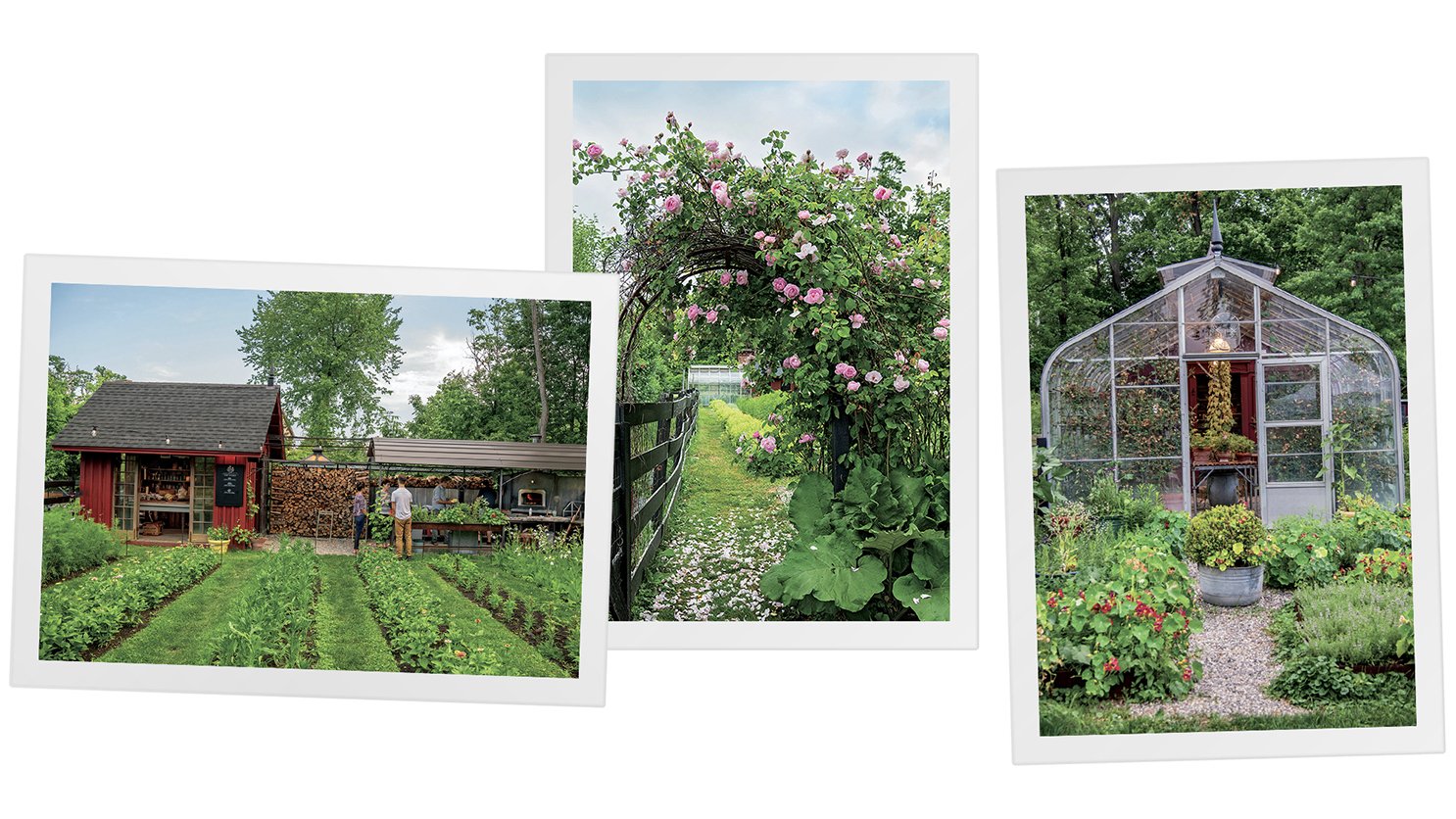Exploring Homesteading and Sustainability with The Children's Heritage Sourcebook

Photography © Sara Prince for THE CHILDREN’S HERITAGE SOURCEBOOK: BACK-TO-ROOTS LIVING FOR KIDS AND TEENS by Emma Rollin Moore, Lauren Malloy, and Ashley Moore © Rizzoli, 2023
Written by Michelle Adams | Photographed by Sara Prince
Our product recommendations may include items from our sponsors and/or contain affiliate links, which means we may earn a commission when purchases are made. Rest assured, every item is genuinely chosen by our editorial team.
In today's rapidly evolving world, teaching children about the elements of homesteading and sustainability is more important than ever. With its wealth of practical insights for embracing a back-to-roots lifestyle within the context of contemporary society, The Children's Heritage Sourcebook emerges as an indispensable guide to cultivating self-sufficiency.
Crafted with passion and expertise by the esteemed authors behind Women's Heritage, The Children's Heritage Sourcebook is a dynamic combination of a cookbook, a manual, and an engaging activity guide for children, teenagers, and adults alike. Within its pages, you will find a diverse range of activities, eighty-five recipes, and projects that align with the curriculum from kindergarten to eighth grade. The authors explore topics ranging from seasonal cooking to foraged foods, the art of pickling, animal care, and raising animals such as horses, quail, chickens, and rabbits. Additionally, The Children’s Heritage Sourcebook presents various craft and garden activities like working with natural dyes, crafting wreaths and flower crowns, and even creating your own herbal soap and skincare products.
The authors assert, "This book is intended as a jumping-off point. It is our hope that while flipping through its pages you will be excited and motivated to try something new. Maybe you’ll grow something in the garden or cook something yummy in the kitchen, or you might even get inspired to adopt a new pet or get a job working with animals. Perhaps your new interest will encourage your parents to get involved as well."
Read on for three kid-friendly recipes in an excerpt from The Children's Heritage Sourcebook.
Photography © Sara Prince for THE CHILDREN’S HERITAGE SOURCEBOOK: BACK-TO-ROOTS LIVING FOR KIDS AND TEENS by Emma Rollin Moore, Lauren Malloy, and Ashley Moore © Rizzoli, 2023
Photography © Sara Prince for THE CHILDREN’S HERITAGE SOURCEBOOK: BACK-TO-ROOTS LIVING FOR KIDS AND TEENS by Emma Rollin Moore, Lauren Malloy, and Ashley Moore © Rizzoli, 2023
Photography © Sara Prince for THE CHILDREN’S HERITAGE SOURCEBOOK: BACK-TO-ROOTS LIVING FOR KIDS AND TEENS by Emma Rollin Moore, Lauren Malloy, and Ashley Moore © Rizzoli, 2023
Sourdough Biscuits
MAKES 6 TO 8 BISCUITS
These biscuits are a kid’s dream come true. They’re just a bit different than the usual baking powder biscuits in flavor and texture, and even more delicious and flaky. You can eat them plain or with your favorite toppings. We even use them as hamburger buns.
2 cups all-purpose flour, plus more for dusting
1⁄2 cup plus 2 tablespoons cold lard, coconut oil,
or unsalted butter, cut into small chunks
1⁄2 cup recently fed sourdough starter
1 tablespoon raw honey
1 teaspoon sea salt
1 teaspoon baking powder
1 teaspoon baking soda
1⁄2 cup whole milk, buttermilk, kefir, or coconut milk
1. Put the flour in a large bowl. Using a pastry cutter or knife and fork, cut in the cold lard until the mixture resembles coarse crumbs. Stir in the sourdough starter, honey, salt, baking powder, baking soda, and milk until a soft dough just comes together.
2. Flour a work surface. Roll out the dough with a floured rolling pin to a 2-inch thickness. Cut out six to eight circles with a 1 1 ⁄2-inch round cookie cutter or glass. Place them on a parchment-lined baking sheet and put it in the fridge to chill for 8 hours.
3. Preheat the oven to 425°F. Take the biscuits out of the fridge and place them in a 10-inch cast-iron or other ovenproof skillet; they should be touching one another. Bake for 15 minutes, or until the biscuits are golden brown. Let cool for at least 30 minutes before serving.
Guacamole with Carrot and Radish Chips
Makes 1 1/2 Cups
Nothing beats fresh guacamole as an addition to a summer farmers market feast. You can serve it with carrot and radish chips or the traditional tortilla chips.
2 ripe avocados, pitted and
peeled
2 to 4 tablespoons minced
red onion
2 tablespoons finely
chopped fresh cilantro
(leaves and tender stems)
1 tablespoon fresh lime juice
1⁄4 teaspoon sea salt, plus
more if needed
Pinch of freshly ground
black pepper, plus more if
needed
Red radish and carrot slices
or tortilla chips, for serving
1. Mash the avocados in a medium bowl. Add the onion, cilantro, lime juice, salt, and pepper and stir to combine. Taste and season with more salt and pepper, if needed.
2. Serve with the radish and carrot slices or tortilla chips.
Photography © Sara Prince for THE CHILDREN’S HERITAGE SOURCEBOOK: BACK-TO-ROOTS LIVING FOR KIDS AND TEENS by Emma Rollin Moore, Lauren Malloy, and Ashley Moore © Rizzoli, 2023
Photography © Sara Prince for THE CHILDREN’S HERITAGE SOURCEBOOK: BACK-TO-ROOTS LIVING FOR KIDS AND TEENS by Emma Rollin Moore, Lauren Malloy, and Ashley Moore © Rizzoli, 2023
Color-Changing Rice
Making color-changing lemonade is fun, and you can do a very similar trick with rice. Even more impressive, your bowl of rice can stay two different colors right up until it’s eaten. When you first make the rice, it will be purple because of the cabbage water you cooked it in. Then, wherever you squeeze the lemon juice on it, it will turn bright pink! If you don’t put lemon juice on all of the rice, the parts without any juice will stay purple, so your bowl of rice will be purple and pink. And if you let it sit for a while, about 10 minutes or so, the pink will become even more vibrant.
Red cabbage
Large pot
Filtered water
Rice
Lemon juice
1. Cut up a red cabbage and add it to a large pot.
2. Add water to cover the cabbage, bring to a boil, and let it simmer until the cabbage is tender. The cabbage can now be eaten, fed to
chickens, or put in the compost.
3. The remaining water will be purple. Use this water to cook the rice
instead of regular water, and you will have purple rice!
4. When it is done, squirt some lemon juice on top. Everywhere the
lemon juice touches will turn pink!
For more recipes and homesteading tips:










